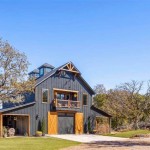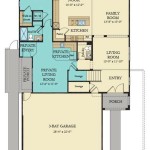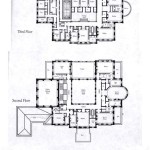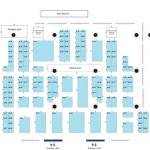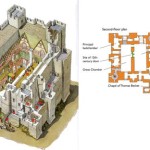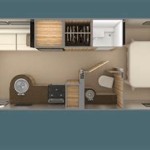A floor plan for a recording studio is a detailed representation of the physical layout of the studio, including the placement of equipment, furniture, and acoustic treatment. It serves as a blueprint for the design and construction of the studio, ensuring that it meets the specific acoustic and functional requirements for recording.
For instance, a well-designed floor plan for a recording studio might include a separate control room and live room, with the control room housing the mixing console, monitors, and other equipment necessary for recording and mixing, while the live room provides an acoustically treated space for musicians to perform.
In this article, we will delve into the key elements and considerations involved in creating a floor plan for a recording studio, exploring the different types of layouts, acoustic treatment options, and equipment placement strategies used to optimize the functionality and sound quality of the studio.
Here are 8 important points to consider when creating a floor plan for a recording studio:
- Studio layout
- Acoustic treatment
- Equipment placement
- Soundproofing
- Ventilation
- Lighting
- Accessibility
- Safety
These factors all contribute to the overall functionality and sound quality of the recording studio.
Studio layout
The layout of a recording studio is crucial for both its functionality and sound quality. The placement of the control room, live room, isolation booths, and other spaces should be carefully considered to ensure that the studio meets the specific needs of the musicians and engineers who will be using it.
One of the most important factors to consider when planning the layout of a recording studio is the workflow. The studio should be designed in a way that allows musicians and engineers to move easily between the different spaces and to access the equipment they need quickly and efficiently. The control room should be centrally located and should have good visibility of the live room and isolation booths. The live room should be large enough to accommodate the musicians and their instruments, and it should be acoustically treated to minimize reflections and standing waves.
Another important factor to consider is the acoustics of the studio. The layout of the studio should be designed to minimize sound leakage between the different spaces. The control room should be isolated from the live room and isolation booths to prevent sound from bleeding into the recordings. The live room should be acoustically treated to create a neutral listening environment that allows engineers to accurately mix and master recordings.
Finally, the layout of the studio should be designed with safety in mind. All electrical equipment should be properly grounded and all cables should be neatly organized to prevent tripping hazards. The studio should also have adequate ventilation to prevent the buildup of heat and fumes.
Acoustic treatment
Acoustic treatment is a crucial aspect of any recording studio design. It involves the use of materials and techniques to control the sound within the studio, minimizing reflections and standing waves that can interfere with the recording process. Proper acoustic treatment can help to create a more accurate and controlled listening environment for engineers and musicians, resulting in better sounding recordings.
- Absorption
Absorption is the process of reducing the amount of sound energy reflected from surfaces within a room. Absorbing materials, such as fiberglass panels, foam, and curtains, can be used to control the reverberation time of a room, making it sound less “live” and more suitable for recording. - Diffusion
Diffusion is the process of scattering sound waves in multiple directions, reducing the buildup of standing waves and creating a more even sound distribution throughout the room. Diffusers can be used to improve the stereo imaging and overall clarity of recordings. - Reflection
Reflection is the process of sound waves bouncing off surfaces within a room. Reflective surfaces, such as hard walls and ceilings, can create echoes and other unwanted reflections that can interfere with the recording process. Reflective surfaces can be treated with absorbing or diffusing materials to reduce their impact on the sound. - Isolation
Isolation is the process of preventing sound from leaking between different spaces within a recording studio. Isolation can be achieved by using soundproofing materials, such as mass-loaded vinyl and acoustic sealant, to create a barrier between different rooms. Proper isolation can help to prevent sound from bleeding into recordings from other sources, such as traffic noise or HVAC systems.
Acoustic treatment is a complex and specialized field, and it is important to consult with an experienced acoustician when designing a recording studio. A well-designed acoustic treatment plan can help to create a recording environment that is both accurate and inspiring, allowing engineers and musicians to capture the best possible sound.
Equipment placement
The placement of equipment within a recording studio is critical to both the functionality and sound quality of the studio. Careful consideration should be given to the placement of all equipment, from the control room monitors to the microphones used to record the instruments. The following are some key factors to consider when placing equipment in a recording studio:
Proximity to other equipment
When placing equipment in a recording studio, it is important to consider the proximity of the equipment to other sources of sound. For example, the control room monitors should be placed away from any sources of noise, such as air conditioning units or computer fans. The microphones used to record the instruments should be placed close to the instruments, but not so close that they pick up unwanted noise from the.
Signal flow
The signal flow of a recording studio is the path that the audio signal takes from the source to the recording device. When placing equipment in a recording studio, it is important to consider the signal flow and to place the equipment in a way that minimizes the distance that the signal has to travel. This will help to reduce noise and distortion in the recordings.
Ergonomics
The ergonomics of a recording studio refers to the way that the equipment is arranged to promote comfort and efficiency for the engineers and musicians who will be using the studio. When placing equipment in a recording studio, it is important to consider the ergonomics of the studio and to place the equipment in a way that allows engineers and musicians to work comfortably and efficiently.
Safety
The safety of a recording studio is also an important factor to consider when placing equipment. All electrical equipment should be properly grounded and all cables should be neatly organized to prevent tripping hazards. The studio should also have adequate ventilation to prevent the buildup of heat and fumes.
Soundproofing
Soundproofing is an important aspect of any recording studio design. It involves the use of materials and techniques to prevent sound from leaking in or out of the studio, creating a quiet and controlled environment for recording. Proper soundproofing can help to eliminate unwanted noise from outside sources, such as traffic or construction, and it can also prevent sound from leaking out of the studio and disturbing neighbors.
- Mass
Mass is one of the most effective ways to soundproof a room. Mass-loaded vinyl (MLV) is a heavy, limp material that can be used to add mass to walls, ceilings, and floors. Adding mass to a surface will help to reduce the transmission of sound through that surface. - Absorption
Absorption is another effective way to soundproof a room. Absorbing materials, such as fiberglass panels, foam, and curtains, can be used to absorb sound waves and reduce the amount of sound that is reflected back into the room. Absorption is most effective at reducing high-frequency sound waves. - Damping
Damping is the process of converting sound energy into heat. Damping materials, such as viscoelastic polymers and rubber, can be used to damp sound waves and reduce their amplitude. Damping is most effective at reducing low-frequency sound waves. - Isolation
Isolation is the process of preventing sound from leaking between different spaces within a recording studio. Isolation can be achieved by using soundproofing materials, such as mass-loaded vinyl and acoustic sealant, to create a barrier between different rooms. Proper isolation can help to prevent sound from bleeding into recordings from other sources, such as traffic noise or HVAC systems.
Soundproofing a recording studio can be a complex and challenging task, but it is essential for creating a quiet and controlled recording environment. By carefully considering the materials and techniques used for soundproofing, it is possible to create a recording studio that is free from unwanted noise and distractions.
Ventilation
Proper ventilation is essential for any recording studio design. A well-ventilated studio will help to prevent the buildup of heat and fumes, and it will also help to create a more comfortable working environment for engineers and musicians. There are a few key things to consider when designing a ventilation system for a recording studio:
Airflow
The airflow in a recording studio should be designed to minimize the buildup of heat and fumes. The ventilation system should be designed to circulate air throughout the studio, and it should be able to remove heat and fumes from the studio quickly and efficiently. The airflow should also be designed to minimize noise, as excessive noise can interfere with the recording process.
Temperature and humidity control
The temperature and humidity in a recording studio should be carefully controlled to prevent damage to equipment and to create a comfortable working environment for engineers and musicians. The ventilation system should be designed to maintain a constant temperature and humidity level in the studio, and it should be able to adjust the temperature and humidity as needed.
Air filtration
The air in a recording studio should be filtered to remove dust and other particles. Dust and other particles can build up on equipment and cause it to malfunction, and they can also create a health hazard for engineers and musicians. The ventilation system should be designed to filter the air in the studio and to remove dust and other particles.
Noise control
The ventilation system in a recording studio should be designed to minimize noise. Excessive noise can interfere with the recording process, and it can also create a stressful working environment for engineers and musicians. The ventilation system should be designed to use quiet fans and other components, and it should be installed in a way that minimizes noise transmission.
By carefully considering the factors discussed above, it is possible to design a ventilation system that will provide a comfortable and healthy working environment for engineers and musicians, and that will also help to protect equipment from damage.
Lighting
Proper lighting is essential for any recording studio design. A well-lit studio will help to create a comfortable and productive working environment for engineers and musicians, and it will also help to ensure that the recordings are of the highest quality.
There are a few key things to consider when designing a lighting system for a recording studio:
General lighting
The general lighting in a recording studio should be bright enough to allow engineers and musicians to work comfortably, but it should not be so bright that it creates glare or eye strain. The general lighting should be evenly distributed throughout the studio, and it should be adjustable to accommodate different needs.
Task lighting
Task lighting is used to provide additional lighting for specific tasks, such as reading music, writing lyrics, or setting up equipment. Task lighting should be placed close to the work area, and it should be adjustable to provide the right amount of light for the task. Task lighting can be provided by desk lamps, floor lamps, or overhead lights.
Accent lighting
Accent lighting is used to highlight specific features of the recording studio, such as artwork, instruments, or equipment. Accent lighting can be used to create a more inviting and visually appealing environment in the studio. Accent lighting can be provided by spotlights, recessed lights, or wall sconces.
Emergency lighting
Emergency lighting is required in all recording studios in case of a power outage. Emergency lighting should be placed in all areas of the studio, and it should be bright enough to allow engineers and musicians to safely evacuate the studio.
By carefully considering the factors discussed above, it is possible to design a lighting system that will provide a comfortable and productive working environment for engineers and musicians, and that will also help to ensure that the recordings are of the highest quality.
Accessibility
Accessibility is an important consideration for any recording studio design. The studio should be designed to be accessible to all users, regardless of their physical abilities. This includes providing wheelchair access to all areas of the studio, as well as providing assistive listening devices for people with hearing impairments.
There are a few key things to consider when designing an accessible recording studio:
Wheelchair access
All areas of the recording studio should be wheelchair accessible, including the control room, live room, and isolation booths. This means that there should be ramps or elevators to access all levels of the studio, and that all doorways should be wide enough to accommodate a wheelchair.
Assistive listening devices
Assistive listening devices can help people with hearing impairments to hear the music and the engineer’s instructions more clearly. Assistive listening devices can include headphones, FM systems, and captioning systems.
Other accessibility considerations
In addition to wheelchair access and assistive listening devices, there are a number of other accessibility considerations that should be taken into account when designing a recording studio. These considerations include:
- Visual cues: Visual cues, such as Braille signs and tactile flooring, can help people with visual impairments to navigate the studio safely.
- Scent-free environment: A scent-free environment is important for people with allergies and asthma.
- Flexible furniture: Flexible furniture, such as adjustable-height desks and chairs, can accommodate users of different sizes and abilities.
By carefully considering the accessibility needs of all users, it is possible to design a recording studio that is welcoming and inclusive for everyone.
Safety
Safety is a top priority when designing a recording studio. The studio should be designed to minimize the risk of accidents and injuries, and to protect equipment from damage. There are a number of safety considerations that should be taken into account when designing a recording studio, including:
Electrical safety
Electrical safety is one of the most important safety considerations when designing a recording studio. All electrical equipment should be properly grounded and all cables should be neatly organized to prevent tripping hazards. The studio should also have adequate ventilation to prevent the buildup of heat and fumes.
Fire safety
Fire safety is another important safety consideration when designing a recording studio. The studio should be equipped with smoke detectors and fire extinguishers, and all flammable materials should be stored safely away from potential ignition sources.
Acoustic safety
Acoustic safety is also important in a recording studio. The studio should be designed to minimize the risk of hearing damage to engineers and musicians. The control room should be isolated from the live room and isolation booths to prevent sound from bleeding into the recordings. The live room should be acoustically treated to create a neutral listening environment that allows engineers to accurately mix and master recordings.
Ergonomic safety
Ergonomic safety is important to prevent injuries to engineers and musicians who spend long hours working in the studio. The studio should be designed to promote good posture and to minimize the risk of repetitive strain injuries. This can be achieved by providing adjustable chairs and desks, and by ensuring that all equipment is within easy reach.
By carefully considering the safety factors discussed above, it is possible to design a recording studio that is safe for both engineers and musicians, and that will help to protect equipment from damage.










Related Posts

